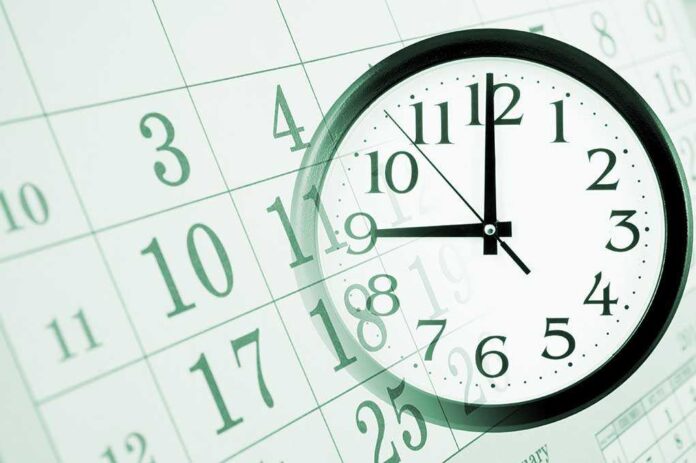
What if the diet trend you thought was extending your life could actually be putting your heart in the crosshairs?
Story Snapshot
- New research links 8-hour time-restricted eating (TRE) to a 91% higher risk of cardiovascular death.
- Nearly 20,000 adults followed for up to 17 years; findings challenge the health halo of TRE.
- Benefits for weight and metabolism exist, but mortality data raises serious questions for at-risk groups.
- Experts call for caution, more research, and personalized dietary recommendations.
The Time-Restricted Eating Paradox: When Diet Trends Collide With Mortality Data
Time-restricted eating—especially the 16:8 method—has been the darling of wellness influencers and medical professionals alike, promising easier weight loss, metabolic boosts, and even a shot at longevity. For years, fitness forums, bestsellers, and even some doctors have advised compressing your meals into an eight-hour window, leaving the other sixteen hours for fasting and, presumably, fat-burning. This simplicity and apparent safety have made TRE a staple in the American health playbook, especially as obesity and diabetes rates climb. But what happens when a beloved health hack collides with new, unsettling science?
Researchers tracking almost 20,000 U.S. adults from 2003 to 2018 have set off alarm bells. Their findings, unveiled at the 2024 American Heart Association conference, point to a 91% higher risk of cardiovascular death for those who limited eating to an eight-hour window compared to those with more traditional, longer eating periods. The data, collected from the gold-standard NHANES study and analyzed over a median span of eight years (with some tracked for up to seventeen), takes aim at the idea that what’s good for your waistline is always good for your heart. This isn’t just about a few headaches or hunger pangs—this is about life and death, especially for those already diagnosed with heart disease or cancer.
Conflicting Evidence: Short-Term Metabolic Wins, Long-Term Uncertainties
For decades, the consensus has been that intermittent fasting and TRE can help shed pounds and tame blood sugar. Randomized trials and systematic reviews continue to show benefits for weight loss and metabolic health, particularly in the overweight and obese. A 2025 clinical trial in Nature Medicine even found that the timing of the eight-hour window hardly mattered; the benefits persisted regardless of when you started or stopped eating. Another study from the University of Mississippi linked the approach to greater fat loss, especially when paired with exercise. These findings have kept TRE in the limelight, reinforcing its status as a low-effort, high-reward lifestyle tweak.
But the new mortality data throws a wrench into the narrative. Until now, most TRE research focused on short-term outcomes—weight, glucose, blood pressure—not on how long people lived or what they died from. The latest American Heart Association study is the first to draw a straight line between an eight-hour eating window and a stark rise in cardiovascular deaths, especially in those already at risk. The contrast is jarring: metabolic improvements on one side, higher death rates on the other. For the millions practicing TRE without medical oversight, the message is anything but clear.
Who Should Worry? The Danger of One-Size-Fits-All Diets
The study’s authors are careful to point out that correlation does not mean causation. Still, the sheer scale and rigor of the research—spanning a large, diverse group over nearly two decades—demands attention. For those with a history of heart disease or cancer, the findings are especially sobering. The risk appears even greater in these populations, suggesting that what works for a healthy 30-year-old gym-goer may spell trouble for someone with a compromised cardiovascular system. The takeaway: dietary advice must be individualized. Blindly adopting popular regimens can backfire, especially when underlying health conditions are in play.
Medical professionals now face a new dilemma. Should they continue recommending TRE to everyone, or should they urge caution for vulnerable patients? The study’s release has already sparked debate among cardiologists and nutritionists, with some calling for a pause until more definitive, long-term research emerges. The days of “one-size-fits-all” diet advice may be numbered, as the need for nuanced, personalized guidance grows ever more urgent.
The Ripple Effect: How the Wellness World Could Change
If these findings hold up under further scrutiny, the consequences for the wellness industry could be seismic. Supplements, apps, and fitness programs built around TRE may see a backlash or at least a demand for more transparency and medical oversight. Public health guidelines, which so far have largely ignored the question of long-term safety, might need a serious overhaul. For the public, the message is both unsettling and liberating: there is no single path to health, and shortcuts may come with hidden tolls.
This Popular Diet May Raise Your Heart Disease Death Risk by 135%, New Study Says
— Eleanor (@Eleanor1514426) September 9, 2025
This open scientific loop ensures one thing: more research and a shift toward individualized nutrition are coming. In the meantime, those considering or already practicing TRE should consult with healthcare professionals and weigh the risks and benefits with eyes wide open. The story of time-restricted eating is far from over, and the next chapter promises to be anything but boring.
Sources:
Nature Medicine RCT on 8-hour TRE and metabolic health (2025)
AHA conference study on 8-hour TRE and cardiovascular mortality (2024)
JAMA Network Open review on TRE, sleep, and quality of life (2025)
University of Mississippi study on TRE and fat loss (2025)
Digit Health meta-analysis on 16:8 TRE safety and efficacy (2025)















